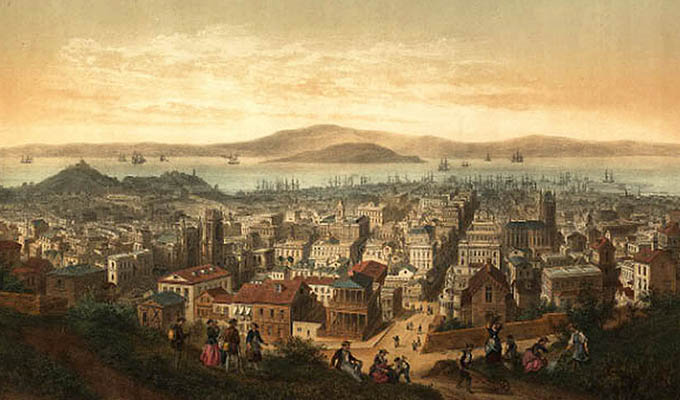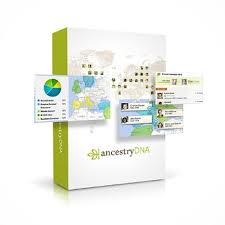Passenger Lists: San Francisco 1800s

SS Sierra Nevada
Arrive San Francisco
February 18, 1854
Captain James H. Blethen
From San Juan del Sud, Nicaragua
February 18, 1854, Daily Alta California, San Francisco
Arrival of the Sierra Nevada

The Nicaragua steamer Sierra Nevada, Capt. J. H. Blethen, arrived yesterday morning from San Juan with 927 passengers, among whom are 181 women and 114 children.
Purser Foster, in his report, which is annexed, gives an account of some important improvements going forward by order of the Company, on the Isthmus. He reports also the sanatory condition of the land travel as excellent, and no sockness or deaths having occurred during the passage.
We are indebted to Mr. Foster and to Capt. Blethen, for their attention to our Marine Reporter.
MEMORANDA.
Steamer Sierra Nevada, J. H. Blethen, commander, left San Francisco on the 16th January, and arrived at San Juan del Sud in 11-1/2 days. The passengers, specie and mails, embarked on the Company's steamer Star of the West, for New York, and Daniel Webster, for New Orleans, on the morning of January 31st, by which they would reach home on the 4th and 7th inst.
The Sierra Nevada left San Juan on the 3d at midnitht; passed Acapulco on the 7th, at midnight; on the 8th, at 10 P. M., passed the Nicaragua steamer Cortes, 20 miles east of Point Fejupan; on the 9th, at 11 a.m., passed the P.M.S.S. Co's steamer Columbia, hence for Panama, and arrived this port on the night of the 16th, having met very strong westerly gales and tremendous head seas, without the least cessation, during the last five days.
The Sierra Nevada brings 927 passengers, of which 181 are women, and 114 children, all in good health, with only one death to record, and that from disease contracted before leaving New York, which fact is unparalleled in the entire history of California emigration, and is the more important when we take in consideration the very large proportion of females and children. The Company are commencing the construction of piers al San Juan, and at the Lake, for the landing of passengers, and omnibusses are expected to be ready on the 1st of March, to convey passengers over the entire land route.
Passengers
February 18, 1854, Sacramento Daily Union, Sacramento, California

February 18, 1854, Daily Alta California, San Francisco

Immigration at the Golden Gate: Passenger Ships, Exclusion, and Angel Island
Robert Eric Barde
Perhaps 200,000 immigrants passed through the Angel Island Immigration Station during its lifetime, a tiny number compared to the 17 million who entered through New York's Ellis Island.
Nonetheless, Angel Island's place in the consciousness of Americans on the West Coast is large and out of proportion to the numerical record. Angel Island's Immigration Station was not, as some have called it, the Ellis Island of the West, built to facilitate the processing and entry of those welcomed as new Americans. Its role was less benign: to facilitate the exclusion of Asians, starting with the Chinese, then Japanese, Koreans, Indians, and all other Asians.
The Children of Chinatown: Growing Up Chinese American in San Francisco, 1850-1920
Wendy Rouse Jorae
Family Skeletons: Exploring the Lives of our Disreputable Ancestors.
Simon Fowler, Ruth Paley
Most families have a skeleton. You may have already discovered yours via the grapevine or your own research. Or you may simply be intrigued by the dark side of our past. This popular history explores the behaviour of our disreputable ancestors from the unfortunate to the criminal, and introduces a host of colourful characters including 17th century witches, 18th century 'mollies' and Victorian baby farmers. Thematically arranged by skeleton, the text also describes how society punished and provided for its 'offenders' - as well as the changing attitudes that could ultimately bring acceptance.
Italy on the Pacific: San Francisco's Italian Americans (Italian and Italian American Studies)
Palgrave Hardcover)
Sebastian Fichera
San Francisco’s Italian immigrant experience is shown to be the polar opposite of Chicago’s. San Francisco’s Italian immigrants are shown as reintegrating into the host society fairly smoothly, whereas the Chicago group’s assimilation process broke down in dramatic ways.

(Themes in World History)
Patrick Manning
Drawing on examples from a wide range of geographical regions and thematic areas, noted world historian Patrick Manning guides the reader through trade patterns, including the early Silk Road and maritime trade, effect of migration on empire and industry, earliest human migrations, major language groups, various leading theories around migration.
Russian San Francisco (Images of America) (Images of America)
Lydia B. Zaverukha, Nina Bogdan, Foreward by Ludmila Ershova, PhD.
Even before San Francisco was founded as a city, Russian visitors, explorers, and scientists sailed to the area and made contact with both the indigenous people and representatives of the Spanish government. Although the Russian commercial colony of Fort Ross closed in 1842, the Russian presence in San Francisco continued and the community expanded to include churches, societies, businesses, and newspapers. Some came seeking opportunity, while others were fleeing religious or political persecution.










 Copyright ~ 1998-2018.
Copyright ~ 1998-2018. 